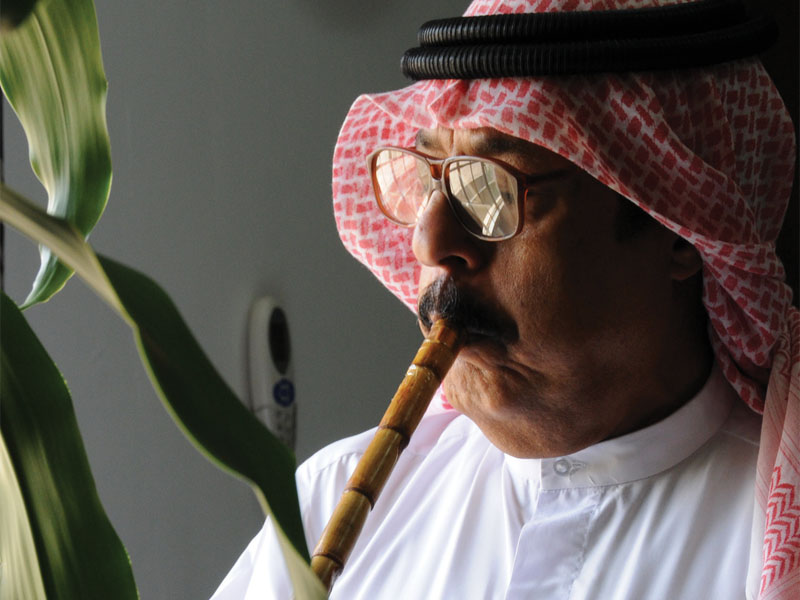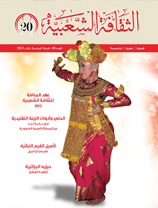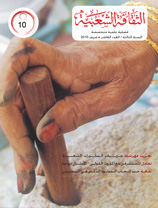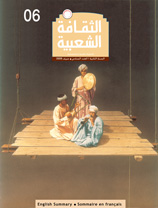The Flute...The oldest Arabic Traditional Musical Instrument
Issue 12

Mohamed Mahmoud Fayed (Egypt)
This research studies the flute which is supposed to be one of the oldest musical instruments. An intimate relation is usually established between the player and the flute. The traditional artist created several folktales around the instrument which is made of a pierced wood. These folktales sanctified the flute. Moreover, the artist had attributed situation and events enriched the instrument with a spiritual value, in addition to its historical and artistic values.
The flute accompanied the religion and traditional singing it also accompanied the Madih and the melodies of the Dhikr. The flute has a significant role in most works of the musicians. It is also a part of the cultural heritage of the Romanian. It is the emblem of the district surrounded by Ayocini Mountains, west of Romania.
The flute is composed of nine reeds which have six holes along one side. The other side is controlled by the thumbs so the flute is highly qualified to play music according to the Arabic musical scale. It also plays music accurately and the musician is obliged to use more than one instrument to play whatever pieces he wishes.
The flute is made of a cane hollowed on both ends with six holes. It is considered as a sophist musical sign. It is well known that the martyr Um al Khier Rabaa bint Ismail al Adawiyya al Bisriyya, the salve of al Atieg, used to play the flute while performing poetry. She preferred the flute for the Od. Moreover, since the 13th century, up to now, the flute is privileged a special status, in particular in the sophist music since the establishment of the Molowi Tariga by Gala Al-Din Al Romi. Al Romi is supposed to be the first poet to compose poetry in Turkish language. He wrote al Muthnawi which consists of 25700 verses about the basis of Islam and the Oneness of Allah. Al-Roomi has afforded a great part of his poetry for the flute. On the other hand, the Molowien were fond of the flute believing that it could display the secrets of God.
The player of the flute was treated as a singer. More than a player of the flute could accompany the band to enrich the playing. Several flute players have remarkably contributed in the aspect of the flute melodies, Knochek, Othman, Ismael Dahab, Salim the third, Saad al Din and Saad al Din Arl for instance. The sophist school later during the Othmani Invasion had been transformed to Egypt and was hosted in the Takya. The Molowi style was performed up to mid of 20th century.
The most prominent Egyptian players were graduated from this school. The Egyptian identity of the flute music is later established. In the conference of the Arab Music in the year 1932 a committee was organized to collect and document traditional music chaired by the German, Robert Lakhman. The committee documented nine records of the flute about the Molowi rituals together with five records of the Laythin Dhikr.
The flute, usually needs a talented player who could play continuously, otherwise, he could not apprehend the essence of the instrument.




































































